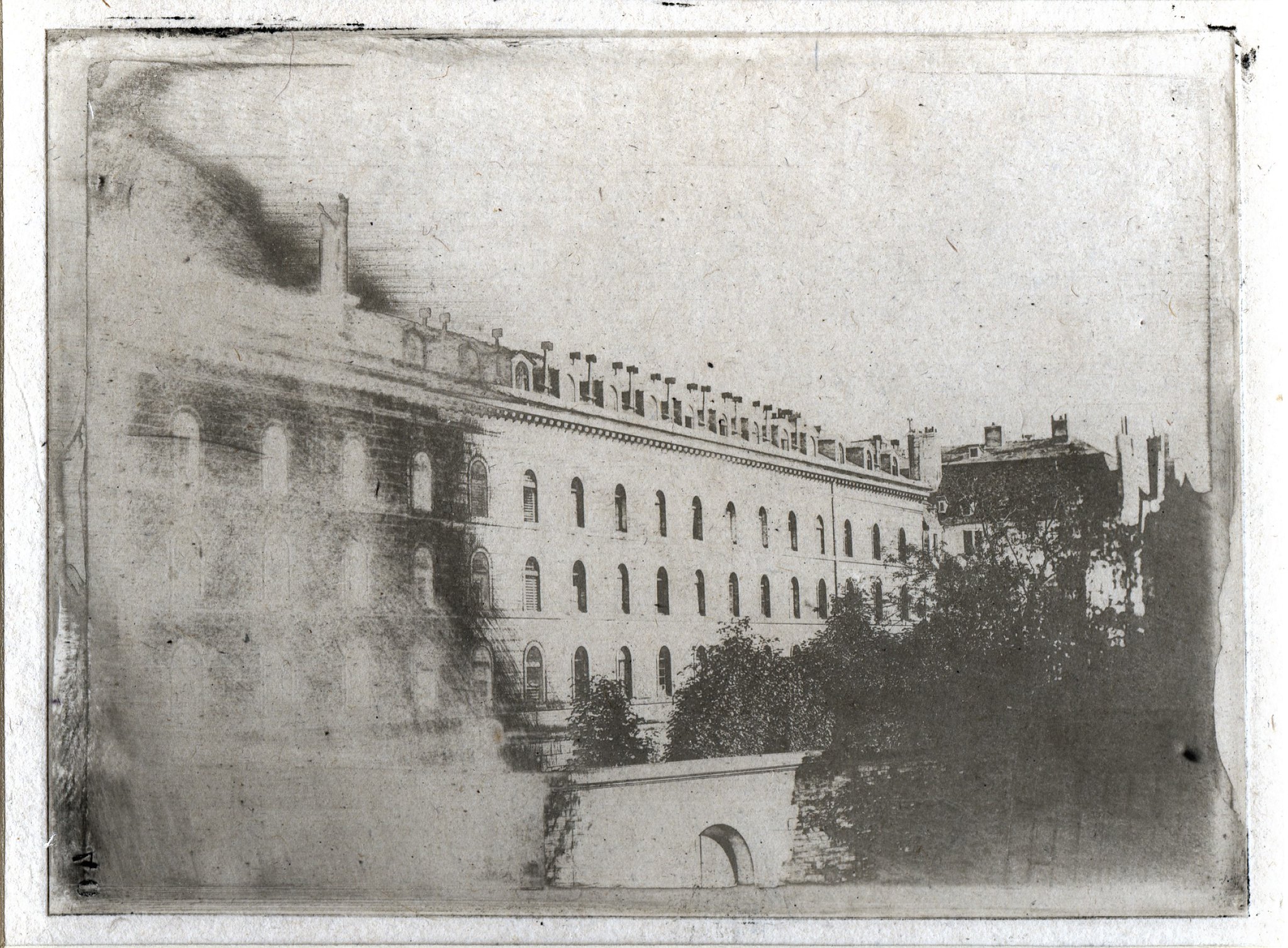Armand Hippolyte Fizeau1842Façade of the Seminary, Place Saint-Sulpice
Etching, from a daguerreotype plate
3.5 x 4.75 in.
Archive FarmsThe Patrick Montgomery Collection, Object No. 2011.447
Notes: Fizeau's apartment was located nearby at 17, rue du Cherche-Midi. Armand Hippolyte Louis Fizeau FRS FRSE MIF (23 September 1819 - 18 September 1896) was a French physicist, best known for measuring the speed of light in the namesake Fizeau experiment. Fizeau was born in Paris to Louis and Beatrice Fizeau. He married into the de Jussieu botanical family. His earliest work was concerned with improvements in photographic processes including substituting bromine for the iodine used by Daguerre as well as a process for making engravings directly from daguerreotypes. Following suggestions by François Arago, Léon Foucault and Fizeau collaborated in a series of investigations on the interference of light and heat. In 1848, he predicted the redshifting of electromagnetic waves. In 1849, Fizeau calculated a value for the speed of light to a better precision than the previous value determined by Ole Rømer in 1676. In addition to the work on optics, Fizeau also established the velocity of electricity in wires, corresponding to one-third of the speed of light. He did valuable work in the development of induction coils, in the application of the Doppler effect in astronomy, and in the utilization of optical wavelengths for precision measurements. Fizeau never held professorships but was elected to the Academy of Sciences in 1860. He died after a long illness in Venteuil near Jouarre on Sept. 18, 1896.
LL/112614

